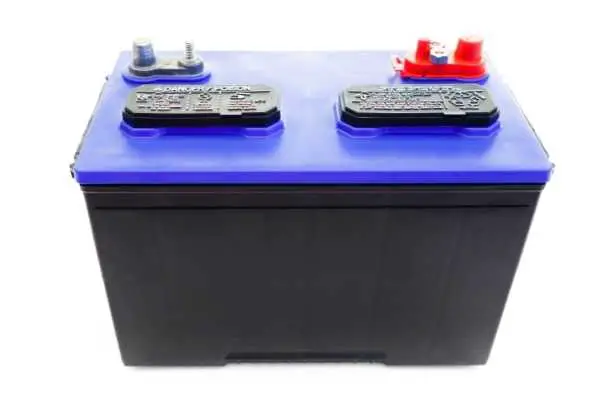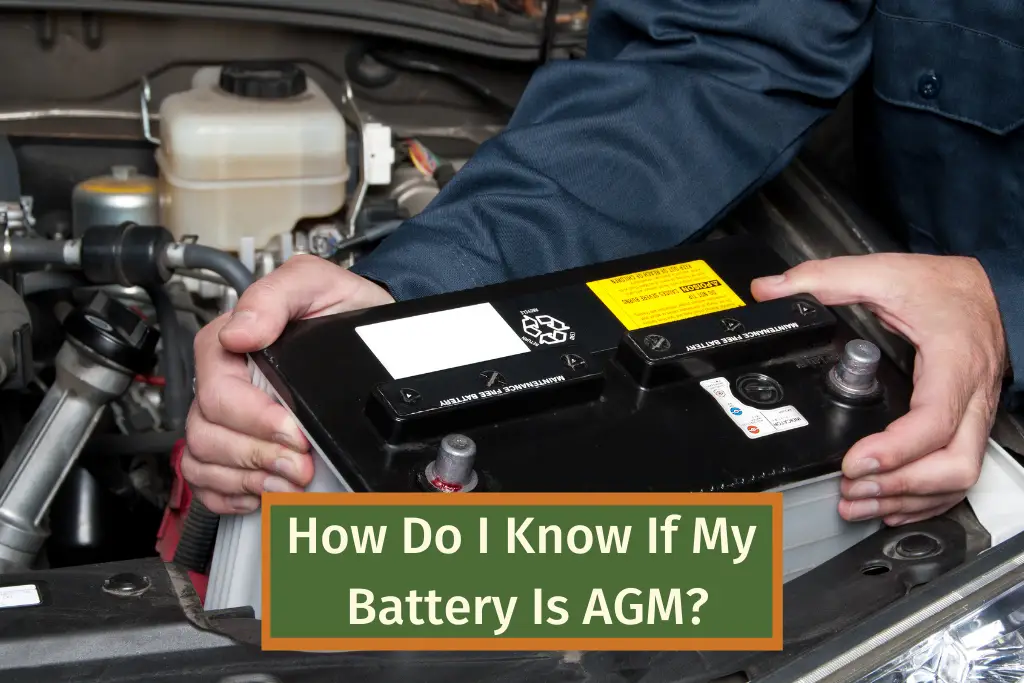How Do I Know If My Battery Is AGM?
Lead-acid batteries are used in most cars, RVs and boats, so it’s likely that you have one in your RV. But, there are a few different types, so how do I know if my battery is AGM?
The most obvious way to find out if your battery is AGM is to check the label on your battery. If it is AGM it will have “AGM” or “Absorbed Glass Mat” on the label that’s stuck on the battery. If there is no label on your battery, then perform an online search of the battery model name and number, this will show you if your battery is AGM or not.
If you shake an AGM battery there should be no movement after you’ve stopped, this also happens with gel-filled, so it’s not a conclusive test.
If you’re still wondering what an AGM battery is, here is some more information.
What is an AGM Battery?
AGM stands for absorbed glass mat, they are a lead-acid dry-cell battery. They are VRLA (Valve Regulated Lead-Acid) also known as VRSLAB (Valve Regulated Sealed Lead-Acid Battery). Because they are sealed so you don’t need to ventilate them and they don’t need topping off.
AGM batteries use a glass fibre mesh to hold the electrolyte, this is where it gets its name. This ultra thin fibreglass mat sits between the plates, these plates are saturated with the battery acid (about 95%).
The sandwiched fiberglass is then compressed between the plates and welded in place, as the plates and mats are packed so tightly together there is very little movement and so it can hold up to vibrations well.
Like gel-filled when you shake them there isn’t any extra movement once you stop.
They look very similar to gel-filled batteries, and without the label they are very hard to differentiate.
AGM batteries are light and can be installed into small closed spaces, they can also hold their charge for longer than other models.
Because of the fine glass mesh they degrade slower and thus have a longer lifespan.
For all these reasons they are some of the most popular battery types for RVs, however they are one of the more costly options.
The Origin of the AGM battery
The AGM battery technology was invented in 1980 and then developed for use in military aircraft in 1985. The power, weight, safety and reliability made the AGM battery perfect for military use.
Nowadays the AGM batteries are made by several manufacturers and are commonly used in cars, boats and RVs.
Their high performance and long life make them particularly suitable for todays modern vehicles and especially for RVs that are heavily equipped with electrical systems and appliances that consume a lot of energy.
AGM batteries are also used for the stop/start technology that is becoming increasingly popular.
The stop/start technology was developed to reduce CO2 emissions and save fuel, therefore being better for the environment.
The stop/start system turns off your vehicle’s engine when it’s stopped, either at lights or in traffic. The engine then restarts once you press the accelerator pedal or clutch. This simple mechanism reduces fuel consumption and cuts CO2 emissions up to 10%.
The problem with the start/stop technology is that the vehicle’s battery has a lot more work to do, and hence why the AGM battery works perfectly.

What Is A Car/RV Battery And What Does It Do?
A car or RV battery is rechargeable and used to start the motor, it also powers the electrical components of the vehicle.
Without a battery your vehicle won’t start, when the battery has powered up the motor it powers the electrical components like the radio, electric windows, lights etc.
Batteries are rechargeable and the alternator in your vehicle acts as a generator to charge the battery.
Because modern cars, RVs and boats have more and more electrical appliances, the role of the battery is becoming ever more important. Hence why most vehicles now have an AGM battery that can keep up to the demands.
Advantages of AGM Batteries
- Unspillable
The fibreglass mats prevent the battery from becoming flooded, and avoid spillage. The glass fibres hold the electrolyte in place, rather than absorbing it like other lead-acid batteries, this makes them unspillable.
- Maintenance Free
The AGM batteries don’t need any water, and so are maintenance free.
- High Power Output
The design of AGM batteries mean that there is minimal internal resistance and so the battery can perform high power tasks regularly and be very responsive.
- No ventilation
AGM batteries don’t give off any hydrogen gas whilst being charged so there is no need to ventilate them.
- Quick charging time
They can charge upto 5 times faster with the same power source than flooded batteries.
- Longer lifespan
AGM batteries last longer than flooded batteries because there is no self-discharging. This means that you don’t have to recharge them after long periods of no use.
- Durable
The design of the AGM battery means that it is extremely durable, it can withstand intense vibration. The compact design also ensures that there are no loose components that can fall apart and break.
- No sulfation
Sulfation is the formation of lead sulfate crystals in the cells of a battery, this occurs when batteries are not fully charged. This is why you should fully charge most batteries at least every 6 months, the design of AGM batteries makes sulfation far less likely to happen.
- Temperature tolerance
Unlike other batteries AGM batteries can withstand low and freezing temperatures, this makes them a great option if you are in a colder climate.
Final Thoughts
The easiest way to check if your battery is AGM is to look for the label on it, if there is no label a quick internet search of the model and model number should give you an answer.
References
www.solar-electric.com/learning-center/agm-battery-technology.html/
en.wikipedia.org/wiki/Automotive_battery

